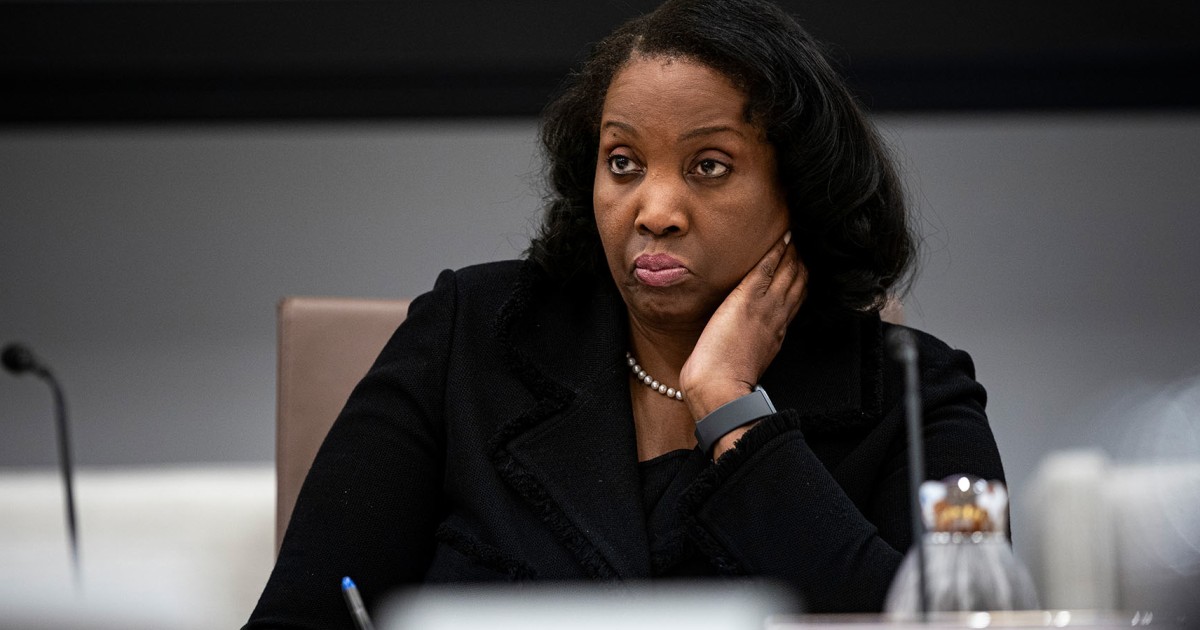At Jackson Hole, Cleveland Fed President Beth Hammack made it clear she does not see room for rate cuts right now. “I see an inflation picture that is too high and rising, and moving in the wrong direction,” she said Thursday. For Hammack, the labor market is still “reasonably good,” which in her view removes any urgency to move in September.
Elevate Your Investing Strategy:
- Take advantage of TipRanks Premium at 50% off! Unlock powerful investing tools, advanced data, and expert analyst insights to help you invest with confidence.
She said, “I would not be supportive with the current data that I have today of reducing interest rates.” Hammack is not a voting member of the rate-setting committee this year, but her comments underline a camp inside the Fed that remains firmly against easing policy while inflation is refusing to cool. Her stance reflects a worry that cutting too soon could stoke new price pressures instead of containing them.
Collins Signals Openness to Easing
Boston Fed President Susan Collins took a different tack. She acknowledged inflation remains a concern, but her eye is on the labor market. Weaker payrolls and rising tariffs, she said, could dent household spending power and leave consumers stretched. In that scenario, she suggested the Fed may have to step in with support.
“If the risks of worsening labor market conditions relative to those risks of elevated inflation…then it may be appropriate soon to begin dialing back interest rates,” Collins said. Unlike Hammack, Collins has a vote this year, which gives her words more immediate weight. Her tone suggested that, depending on how the data looks before the September 16–17 meeting, a cut is very much on the table.
Labor Market Clouds the Picture
The split between Hammack and Collins comes as investors digest downward revisions to earlier payroll data. The July jobs report disappointed, adding to the sense that employment is softening faster than previously believed. That initially spurred strong bets on a September cut, though in recent days those expectations have eased somewhat.
For Hammack, the new data is not yet enough to outweigh her inflation worries. She believes rates are already close to a “neutral” level that neither boosts nor slows the economy, which means moving lower could risk giving inflation more oxygen. Cutting prematurely, she warned, “doesn’t seem appropriate.”
The Fed Confronts Inflation Risks
Collins, however, pointed to the danger of waiting too long. Inflation, she admitted, may continue rising through the end of 2025 before easing again in 2026. But holding rates high until every uncertainty is resolved, she argued, would mean acting too late. “The Fed couldn’t wait until we know everything that’s going to happen,” she said. “That’s going to be much too late.”
Nevertheless, both officials accept that tariffs are complicating the outlook. Hammack worries lower rates would make it easier for firms to pass tariff costs onto consumers, raising prices further. Collins takes a more balanced view, noting risks but also highlighting the possibility that labor weakness may demand earlier action.
The Fed Faces a Divided House
The disagreement between Hammack and Collins is emblematic of the broader split inside the Fed. Some policymakers argue inflation must be beaten before easing. Others see a fragile labor market and believe the costs of waiting could be greater than the risks of cutting too soon.
The outcome may hinge on whether the next data points confirm Hammack’s fear of rising inflation, or Collins’ concern that the labor market is starting to buckle.
Stay ahead of macro events with our up-to-the-minute Economic Calendar — filter by impact, country, and more.
Source link
